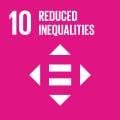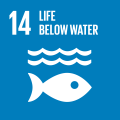Ensuring healthy lives and promoting well-being at all ages is essential to sustainable development. Currently, the world is facing a global health crisis unlike any other – COVID-19 is spreading human suffering, destabilizing the global economy and upending the lives of billions of people around the globe.
Before the pandemic, major progress was made in improving the health of millions of people. Significant strides were made in increasing life expectancy and reducing some of the common killers associated with child and maternal mortality. But more efforts are needed to fully eradicate a wide range of diseases and address many different persistent and emerging health issues. By focusing on providing more efficient funding of health systems, improved sanitation and hygiene, and increased access to physicians, significant progress can be made in helping to save the lives of millions.
Health emergencies such as COVID-19 pose a global risk and have shown the critical need for preparedness. The United Nations Development Programme highlighted huge disparities in countries’ abilities to cope with and recover from the COVID-19 crisis. The pandemic provides a watershed moment for health emergency preparedness and for investment in critical 21st century public services.


































Facts & Figures
Children
In 2018 an estimated 6.2 million children and adolescents under the age of 15 years died, mostly from preventable causes. Of these deaths, 5.3 million occurred in the first 5 years, with almost half of these in the first month of life.
Despite determined global progress, an increasing proportion of child deaths are in Sub-Saharan Africa and Southern Asia. Four out of every five deaths of children under age five occur in these regions.
Children in sub-Saharan Africa are more than 15 times more likely to die before the age of 5 than children in high income countries.
Malnourished children, particularly those with severe acute malnutrition, have a higher risk of death from common childhood illness such as diarrhoea, pneumonia, and malaria. Nutrition-related factors contribute to about 45per cent of deaths in children under-5 years of age.
Maternal Health
Over 40 per cent of all countries have fewer than 10 medical doctors per 10,000 people; over 55 per cent of countries have fewer than 40 nursing and midwifery personnel per 10,000 people.
In Eastern Asia, Northern Africa and Southern Asia, maternal mortality has declined by around two-thirds.
Every day in 2017, approximately 810 women died from preventable causes related to pregnancy and childbirth.
94per cent of all maternal deaths occur in low and lower middle-income countries.
Young adolescents (ages 10-14) face a higher risk of complications and death as a result of pregnancy than other women.
But maternal mortality ratio – the proportion of mothers that do not survive childbirth compared to those who do – in developing regions is still 14 times higher than in the developed regions.
HIV/AIDS, Malaria & Other Diseases
38 million people globally were living with HIV in 2019.
25.4 million people were accessing antiretroviral therapy in 2019.
1.7 million people became newly infected with HIV in 2019.
690 000 people died from AIDS-related illnesses in 2019.
75.7 million people have become infected with HIV since the start of the epidemic.
32.7 million people have died from AIDS-related illnesses since the start of the epidemic.
Tuberculosis remains the leading cause of death among people living with HIV, accounting for around one in three AIDS-related deaths.
Globally, adolescent girls and young women face gender-based inequalities, exclusion, discrimination and violence, which put them at increased risk of acquiring HIV.
HIV is the leading cause of death for women of reproductive age worldwide.
AIDS is now the leading cause of death among adolescents (aged 10–19) in Africa and the second most common cause of death among adolescents globally.
Over 6.2 million malaria deaths have been averted between 2000 and 2015, primarily of children under five years of age in sub-Saharan Africa. The global malaria incidence rate has fallen by an estimated 37 per cent and the mortality rates by 58 per cent..
Links
Want to know more about
Sustainable Development?
Simply fill out your email and message and one of our agents will get back to you.
